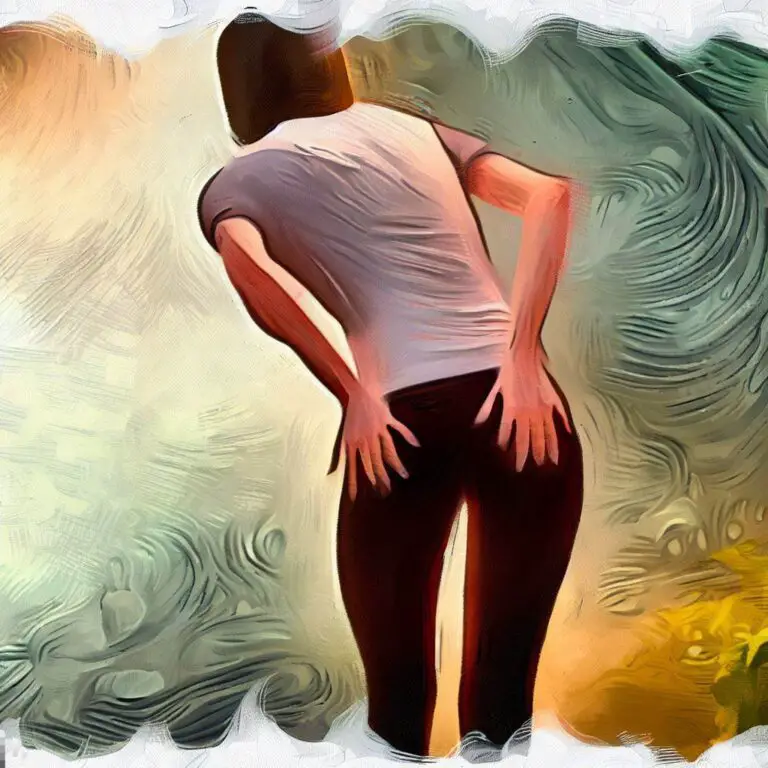Introduction
If you regularly experience back pain, particularly in the lower back, and have been searching for a solution without knowing the underlying cause, this article is for you. In this discussion, we will explore natural substances that have shown promise in alleviating lower back pain, regardless of the primary cause.
The Role of Vitamin D in Our Bodies
Vitamin D, often referred to as the “sunshine vitamin,” is an essential nutrient that plays a vital role in maintaining overall health. It is unique among vitamins because our bodies can produce it when the skin is exposed to sunlight. Additionally, it can be obtained through certain foods and supplements.
One of the primary functions of vitamin D is its involvement in calcium metabolism. It aids in the absorption of calcium from the intestines, which is crucial for maintaining healthy bones and teeth. Without sufficient vitamin D, the body struggles to absorb calcium efficiently, leading to weakened bones and an increased risk of fractures.
Interestingly, emerging research has highlighted a potential connection between vitamin D deficiency and chronic musculoskeletal pain, including lower back pain. Several studies have investigated the relationship between vitamin D levels and various types of pain, revealing intriguing findings.
In a notable study conducted in 2018, researchers found that individuals experiencing joint inflammation, muscle pain, and chronic widespread pain had significantly lower levels of vitamin D compared to those without these symptoms. This association suggests that vitamin D deficiency might contribute to musculoskeletal pain.
The exact mechanisms by which vitamin D influences pain perception and musculoskeletal health are still being explored. However, it is believed that vitamin D receptors are present in various tissues, including those involved in pain sensation and musculoskeletal function. Vitamin D receptors can modulate the expression of genes that are involved in immune response, inflammation, and muscle function, all of which can affect pain perception and the overall health of the musculoskeletal system.
Furthermore, vitamin D deficiency is often referred to as a “silent epidemic” because it can occur without noticeable symptoms. This makes it challenging to identify deficiency solely based on how an individual feels. Consequently, individuals experiencing chronic back pain or other musculoskeletal discomfort may benefit from having their vitamin D levels assessed to determine if supplementation is needed.
While vitamin D deficiency doesn’t necessarily cause all instances of lower back pain, ensuring adequate vitamin D levels through proper sun exposure, diet, or supplementation may have a positive impact on musculoskeletal health and potentially alleviate symptoms for some individuals. However, it’s important to note that vitamin D supplementation may not provide relief for everyone, as the underlying causes of lower back pain can vary.
To maintain optimal vitamin D levels, it is generally recommended to spend time outdoors in sunlight, particularly during midday when the sun is at its highest point in the sky. The amount of time needed to synthesize vitamin D varies depending on factors such as skin type, geographic location, time of year, and sunscreen use. Additionally, incorporating dietary sources of vitamin D, such as fatty fish (salmon, mackerel, and sardines), fortified dairy products, and egg yolks, can contribute to overall vitamin D intake.
In cases where sun exposure and dietary sources are insufficient, vitamin D supplementation may be necessary. However, it is important to consult with a healthcare professional to determine the appropriate dosage and duration of supplementation based on individual needs and potential interactions with other medications or health conditions.
How Much do I Need?
Evaluating vitamin D levels in individuals experiencing lower back pain can provide valuable insights into the potential role of vitamin D in their condition.
This assessment allows healthcare professionals to make informed decisions regarding treatment and optimize the management of lower back pain. Let’s explore some interesting scientific facts related to the evaluation of vitamin D levels and its impact on back pain:
Seasonal Variation
Vitamin D levels can vary throughout the year due to seasonal changes in sunlight exposure. During the winter months, when sunlight is limited, vitamin D deficiency tends to be more prevalent. This variation may contribute to an increased incidence of back pain during this time.
Latitude Effect
Individuals living at higher latitudes, farther away from the equator, are more susceptible to vitamin D deficiency. The angle of the sun’s rays becomes increasingly oblique at higher latitudes, resulting in reduced UVB radiation, which is necessary for the synthesis of vitamin D in the skin. Consequently, people living in northern regions may have lower vitamin D levels and a potentially higher risk of experiencing back pain.
Skin Pigmentation
The amount of melanin present in the skin affects the production of vitamin D. Individuals with darker skin have higher levels of melanin, which can reduce the skin’s ability to produce vitamin D in response to sunlight exposure. As a result, people with darker skin may have lower vitamin D levels and may be more prone to vitamin D deficiency-related back pain.
Aging and Vitamin D
The body’s ability to produce and utilize vitamin D declines with age. Older adults are at an increased risk of vitamin D deficiency due to factors such as reduced skin synthesis and decreased efficiency in converting vitamin D into its active form. As a result, age-related vitamin D deficiency may contribute to the development or exacerbation of back pain in older individuals.
Obesity and Vitamin D
Obesity is associated with lower vitamin D levels due to its sequestration in fat tissue, leading to reduced circulating vitamin D. Moreover, excess weight can limit outdoor activities and sun exposure, further exacerbating the risk of vitamin D deficiency. In individuals with obesity-related back pain, evaluating vitamin D levels becomes particularly important to identify potential underlying factors contributing to their condition.
Chronic Illnesses
Certain chronic illnesses, such as inflammatory bowel disease, celiac disease, and kidney disorders, can impair the absorption and metabolism of vitamin D. Individuals with these conditions may be more prone to vitamin D deficiency and may experience related musculoskeletal pain, including lower back pain.
Genetic Factors
Variations in genes involved in vitamin D metabolism and receptor function can influence an individual’s vitamin D status and responsiveness to supplementation. Genetic factors can impact the effectiveness of vitamin D supplementation in alleviating back pain and overall musculoskeletal health.
Calcium Homeostasis
Vitamin D is crucial for calcium absorption and maintaining calcium homeostasis in the body. Adequate calcium levels are essential for muscle and nerve function, including the muscles supporting the spine. Vitamin D deficiency can disrupt calcium balance, potentially leading to muscle weakness, spasms, and increased susceptibility to back pain.
Non-Musculoskeletal Benefits of Vitamin D
Beyond its role in musculoskeletal health, vitamin D has numerous other health benefits. It plays a role in immune function, cardiovascular health, cognitive function, and mood regulation. Ensuring optimal vitamin D levels not only helps manage back pain but also contributes to overall well-being.
Dosage & Duration
Determining the appropriate dosage and duration of vitamin D supplementation is crucial for maximizing its benefits and ensuring safety. Here’s an elaboration on the safe dosage and duration of vitamin D supplementation:
Optimal Vitamin D Levels
The optimal range for vitamin D levels in the blood is generally considered to be between 30 and 50 ng/mL (nanograms per milliliter). Maintaining vitamin D levels within this range is associated with improved musculoskeletal health and overall well-being.
Safe Daily Dosage
A commonly advised safe daily dosage of vitamin D supplementation is around 10,000 international units (IU). This dosage is generally well-tolerated and effective for most individuals. However, it’s important to note that individual factors, such as age, underlying health conditions, and baseline vitamin D levels, may influence the appropriate dosage.
Duration of Supplementation
The duration of vitamin D supplementation depends on several factors, including the initial vitamin D status, the desired target level, and individual response. For individuals with severe vitamin D deficiency, a higher dosage and longer duration may be necessary to restore optimal levels. Regular monitoring of vitamin D levels is recommended to assess the effectiveness of supplementation and make any necessary adjustments.
The Power of Synergy
The combination of vitamin D, vitamin C, vitamin E, and zinc has shown promise in effectively addressing chronic non-specific low back pain
Vitamin C and Inflammation
Vitamin C, also known as ascorbic acid, is well-known for its antioxidant properties. It acts as a scavenger of free radicals, which are molecules that can cause oxidative damage and inflammation in the body. By reducing inflammation, vitamin C may help alleviate pain and support tissue repair in the lower back.
Vitamin E and Oxidative Stress
Vitamin E is a powerful fat-soluble antioxidant that plays a crucial role in protecting cells from oxidative stress. Oxidative stress occurs when there is an imbalance between free radicals and the body’s antioxidant defenses, leading to cellular damage. By reducing oxidative stress, vitamin E may contribute to the overall musculoskeletal health and potentially alleviate lower back pain.
Zinc and Pain Relief
Zinc is an essential mineral involved in numerous physiological processes, including immune function, DNA synthesis, and wound healing. Studies have suggested that zinc may possess analgesic properties and contribute to pain relief. By modulating neurotransmitter activity and interacting with pain receptors, zinc may help reduce the perception of pain in individuals with lower back pain.
Synergistic Effects
The combination of vitamin D, vitamin C, vitamin E, and zinc in managing lower back pain suggests a synergistic effect. Synergy refers to the interaction of substances where the combined effect is greater than the sum of their individual effects. The unique combination of these vitamins and minerals may enhance their individual benefits and provide comprehensive support for managing lower back pain.

End Words
Lower back pain is a complex condition with various underlying factors. A comprehensive approach that addresses multiple aspects of the condition can be beneficial. By targeting inflammation, oxidative stress, and pain relief simultaneously, the combination of vitamin D, vitamin C, vitamin E, and zinc offers a more holistic strategy for managing chronic non-specific low back pain.




Comments are closed.